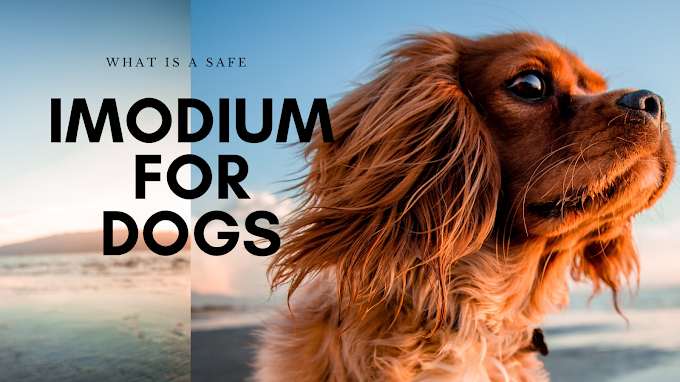Imodium is an over-the-counter medication used to treat diarrhea in people. It is also found under the name Diamode or its generic drug name Loperamide. In dogs, it is used "off label" or "extra label" to treat diarrhea. The terms "off label" and "extra label" refer to the fact that a drug such as Imodium is commonly used in a particular species for a particular reason, but the FDA has not yet approved the drug for that species or reason.
 |
| which Imodium's dosage is safe for dogs? |
Several human OTC medications are used off-label in dogs, such as Benadryl (diphenhydramine), Zyrtec (cetirizine), and Pepcid (famotidine). Although Imodium can be safely given to your dog, there are some things you should consider before giving it to him. Certain medications and diseases can interact with Imodium and it can be difficult to dose smaller breed dogs. Therefore, always check with your veterinarian before giving Imodium to your dog.
What can Imodium treat in my dog?
Just like in humans, Imodium is mainly used in dogs to treat diarrhea, but it can also prove beneficial for other gastrointestinal problems such as irritable bowel syndrome and acute colitis. However, dogs can have diarrhea for a variety of reasons, and not all should be treated with Imodium. Therefore, check with your veterinarian to determine whether or not your dog's diarrhea will respond to Imodium before you begin.
How much Imodium should I give my dog?
Imodium is readily available in 2 mg tablets. The tablets are most convenient for medium and larger dogs, while the oral liquid is best used in small breed dogs. The usual dosage is 2 mg per 40 pounds of body weight (this is equivalent to 0.05 mg per pound). So a 40-pound dog would receive a full tablet, a 20-pound dog would receive half a tablet, and a 10-pound dog would receive a quarter of a tablet. If your dog weighs less than 10 pounds, you may have a hard time dividing a tablet small enough for him. Modium is also provided as an oral liquid at a concentration of 1 mg per 7.49 ml. At this concentration, the dosage would be about 0.4 ml per 1 pound of body weight. Some of the flavors and additives used to make oral liquid medications more palatable for humans may not be safe for dogs. Therefore, always check the list of inactive ingredients and consult your veterinarian before giving to your dog.
To administer the medication, simply wrap the pill in a small piece of high-quality food, such as a pill pocket, chicken, bread, etc. Use just enough to adequately hide the pill to avoid further GI indiscretions. The oral liquid is most easily measured and administered using a syringe with measurements.
Side effects of Imodium in dogs
When giving Imodium to your dog, bloating, constipation and even sedation may occur as side effects. Dogs that have a mutation in their MDR1 gene may experience severe sedation during treatment with Imodium. Breeds susceptible to this gene mutation include Collies, Australian Shepherd, Silky Greyhounds, Shetland Sheepdogs, and German Shepherds. Your veterinarian can talk to you more about the MDR1 mutation and what it means for your dog.
Other considerations before giving Imodium.
Imodium may not be safe in all dogs. If your dog has hypothyroidism, liver disease, kidney disease, Addison's disease (hypoadrenocorticism), or any other debilitating condition, talk to your veterinarian before starting. It should also be used with caution in pregnant or nursing dogs. The usage of Imodium in cats is more controversial and less accepted than in dogs, so it should be avoided.
Imodium may also interact with various medications. Commonly prescribed medications that can negatively interact with Imodium include erythromycin (an antibiotic) and ketoconazole (an antifungal). Make sure your veterinarian knows about any other medications your dog is taking, including vitamins, supplements, and herbal remedies, before starting Imodium.
Imodium may be a safe medication to treat your dog's diarrhea. If your dog's symptoms do not improve or you believe your dog's diarrhea is due to toxin ingestion or infection, call your veterinarian to schedule an appointment.